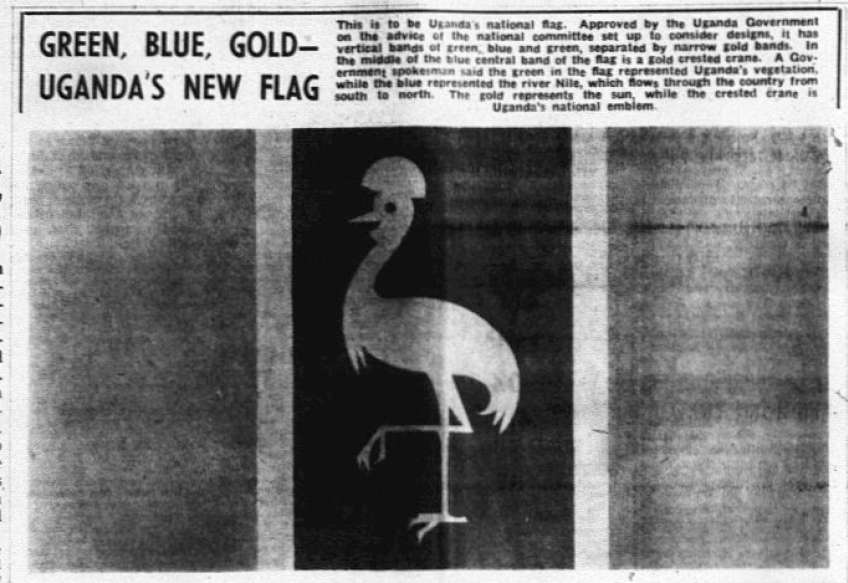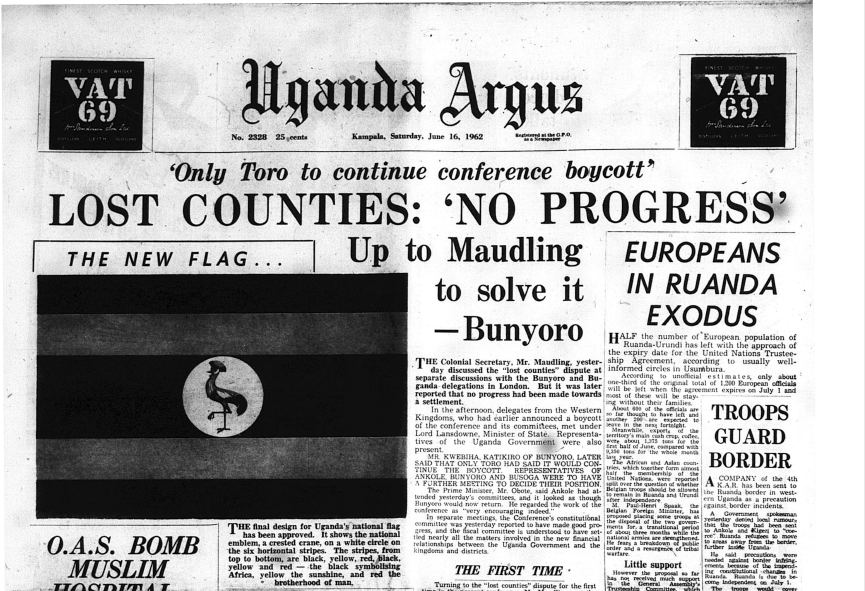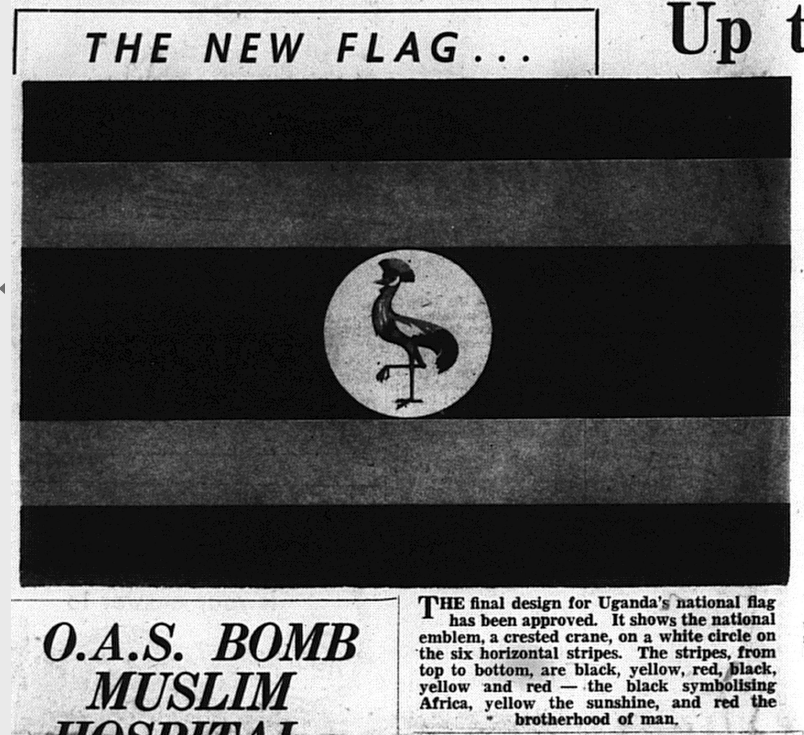
Uganda has a majestic, beautiful flag: second to none. But on the eve of Independence, the design of the flag went in a very different direction. Uganda's future flag was originally designed to feature Blue, Green and Gold, not Black, Gold, and Red. What happened? 1/10 

On 18 Nov. 1961, Ben Kiwanuka, then the Chief Minister of Uganda, introduced a motion to form a committee to create Uganda’s national flag, anthem, & coat of arms. The Uganda Argus was filled with editorials, where concerned Ugandans expressed their opinions about the flag. 2/10
The DP’s national flag committee forwarded its recommendation by 21 March 1962. The flag would be comprised of three vertical bands of green, blue and green, separated by narrow white bands. In the middle of the blue central band, a gold crested crane would be placed. 3/10
One DP activist explained that ‘the green in the flag represented Uganda’s vegetation, while the blue represented the Nile River, which flows through the country from the south to north. The gold represents the sun, while the crested crane is Uganda’s national emblem.’ 4/10
Once the committee announced its recommendation, Uganda’s business sector busied themselves in marketing Uganda’s national banner. The Argus contained 100s of purchasing advertisements for flags, pennant streamers, and hardboard shields w/ the country’s new national colours. 5/10
But the flag was quickly criticized. One writer in Njeru, outside of Jinja, E. Benada, scathingly commented that the DP’s crane was ‘a grotesque caricature with a Khrushchev jaw for a beak, and something that looks like an anvil turned upside down for a crest’. 6/10
The Protestant centrist E.M.K. Mulira and the intellectual Rajat Neogy co-authored a piece in the national press, during which they argued that Uganda’s crane was ‘not entirely free of semi-colonial associations’. Others argued that it was merely the party colours of DP! 7/10
Following their electoral victory, UPC and KY quickly moved to redesign the flag. The UPC’s flag committee was chaired by Grace Ibingira. By mid-May, it had recommended that Uganda’s national flag would have horizontal stripes, removing the earlier vertical design. 8/10
The new colours would be placed on a 6-striped banner: black, red, yellow; & again, black, red, yellow. The flag would maintain the crested crane, superimposed on a white circle. Black, red & yellow, the UPC suggested, represented ‘sunshine & the brotherhood of man.’ 9/10
The DP called a meeting and argued that the new flag had simply incorporated the party colours of KY and UPC. The new flag was advertised in the Uganda Argus on 16 June, less than three months after the DP had displayed theirs. It has been with us ever since. 10/10 



Here, @realsalehUG has beautifully reproduced Uganda's first proposed post-independence flag. 

• • •
Missing some Tweet in this thread? You can try to
force a refresh






